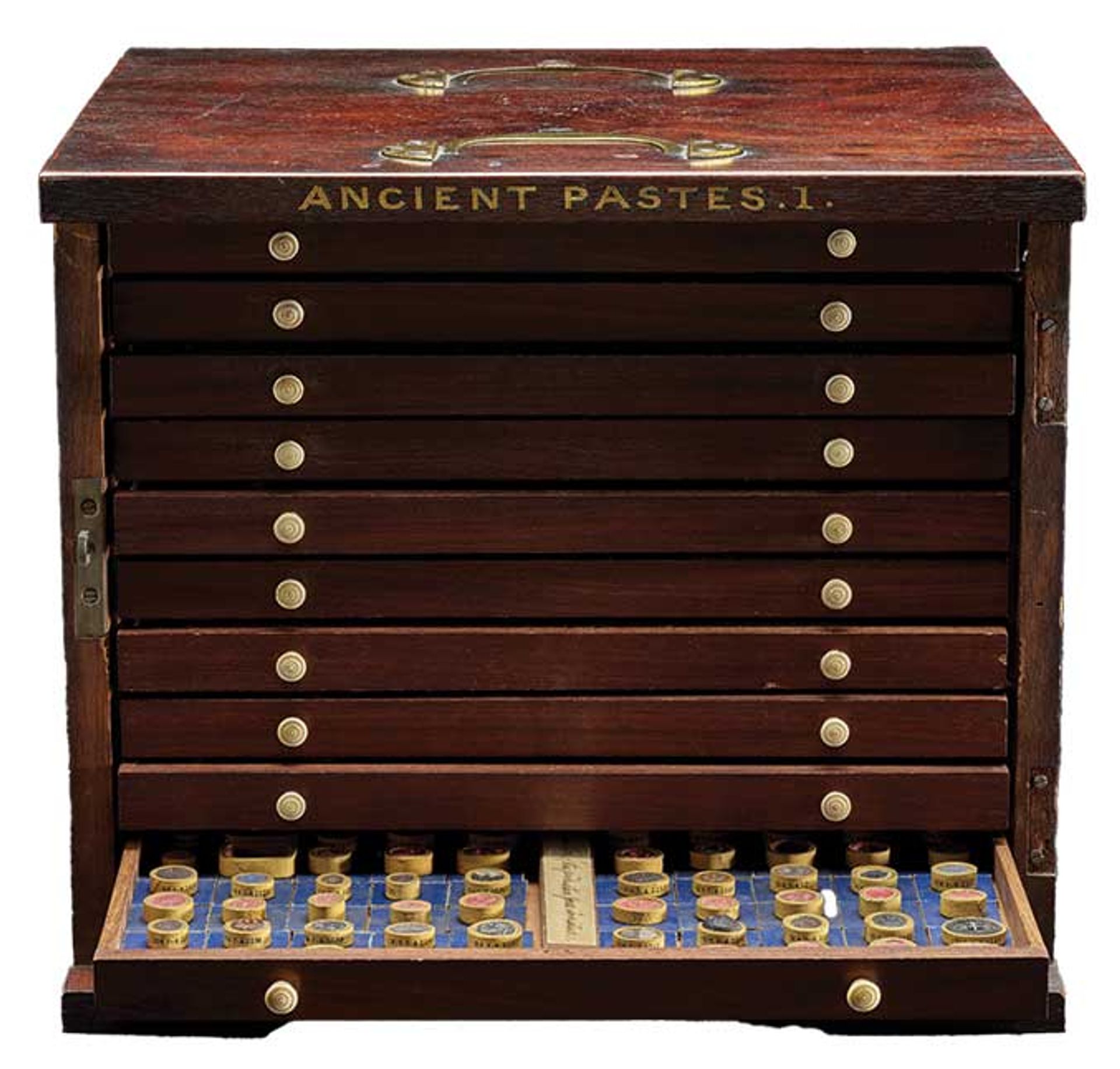How a Danish museum was asked to safeguard and then return 290 stolen gems to British Museum
April 17, 2024 | In the PressFrom The Art Newspaper (https://www.theartnewspaper.com/2024/04/17/how-a-danish-museum-was-asked-to-safeguard-and-then-return-290-stolen-gems-to-british-museum)
A Danish museum has assisted the British Museum (BM) in securing the return of 290 Greek and Roman gems which had been stolen over a 25-year period. The theft was revealed by the London museum last August, a few weeks after a senior curator, Peter Higgs, was quietly suspended.
We can report that the Thorvaldsens Museum, in Copenhagen, established in 1848 by the sculptor Bertel Thorvaldsen, played a key role in facilitating the largest recovery. Last October, 290 stolen items were handed over to the museum for safekeeping and these were returned to the BM in January.
A Thorvaldsens spokesperson tells The Art Newspaper: “We provided a temporary home for the stolen gemstones, helped to get them checked by a conservator and were in contact with the right authorities before they were sent back to the British Museum.”
The institutional route
The 290 items had been deposited at the Copenhagen museum by Ittai Gradel, the Danish antique gem collector and dealer who had acquired them from a single source between 2010 and 2013. At that time, Gradel had no idea that they might have been stolen. When he later developed suspicions, he promptly alerted the BM, although the museum failed to investigate his claims properly until last year. This unfortunate delay led to the resignation last summer of its director, Hartwig Fischer.
Gradel wished to return the gems, but it was problematic for an individual to export stolen antiquities from Denmark, so it seemed prudent to do this via an institution. He knew Kristine Bøggild Johansen, a senior curator at the Thorvaldsens, and this seemed an appropriate route. Gradel had also bought a further 61 gems on eBay in 2014-18, but these were acquired in different circumstances and he returned them directly to the BM earlier last year.
A BM spokesperson says that the museum “is grateful for the Thorvaldsens’ support”.
It is significant that Gradel’s purchases, totalling 351 items, seem to have come from only two sources. This suggests that the objects stolen from the BM may have been dispersed over a long period of time through a relatively small number of channels.
The scale of the theft is staggering. A total of around 2,000 items were either stolen or damaged. They comprised classical Greek and Roman gems (including cameos and intaglios), along with gold rings, earrings and other jewellery. The earliest pieces dated from the late Bronze Age, but most were from the Classical period (with a few modern fakes). They were all taken from a basement storage room of the BM’s department of Greece and Rome, and come largely from the Townley Collection, which was acquired by the museum in 1805 and 1814.
Of the 2,000 pieces, nearly 500 were damaged, but not stolen. Of these, 350 had elements stolen, particularly gold mounts. This gold has almost certainly been melted down for scrap. A further 140 were damaged by tool marks in unsuccessful attempts to remove valuable parts.
This leaves 1,500 complete items which were stolen. Of these, 351 have now been recovered from Denmark, 290 via the Thorvaldsens Museum and 61 direct from Gradel. The BM has also recovered six items from other sources. In addition, the location of a further 300 objects has been established.
Museum on trail of a further 300 gems
The BM is not divulging further details about the 300 (including whether they are in the UK or abroad) while the recovery operation is underway. It is hoped that their return will be secured later this year. If so, this would leave around 850 pieces not located. Most of these have not been catalogued properly or photographed, so identification may be difficult.

A display case of small casts from the exhibition Rediscovering Gems at the British Museum. The exhibition includes 10 of the museum’s stolen gems, either returned to them by Gradel or recovered from other sources. The case is part of the celebrated Townley collection, from which most of the 2,000 pieces stolen from the museum were taken
Photo © Trustees of the British Museum
The art trade has been alerted in case items are offered to dealers. In London, the Antiquities Dealers’ Association is co-operating, although it seems that none of its members has so far come across stolen pieces. The fear is that the 850 pieces have now been dispersed via minor dealers with lesser knowledge.
The operation is being overseen by an independent Expert Advisory Panel for the Recovery of Stolen Items, set up by the BM. A police investigation is ongoing.
Assistance is also being provided by London’s Natural History Museum. A spokesperson would not provide details, but says “using state-of-the-art imaging and analysis equipment, our scientists are working to help to establish the provenance of items related to the recovery project”.
A group of ten selected items recovered by Gradel is at present on show in the BM’s display Rediscovering Gems (until 2 June). Anyone with further information about the missing pieces should contact: recovery@britishmuseum.org





